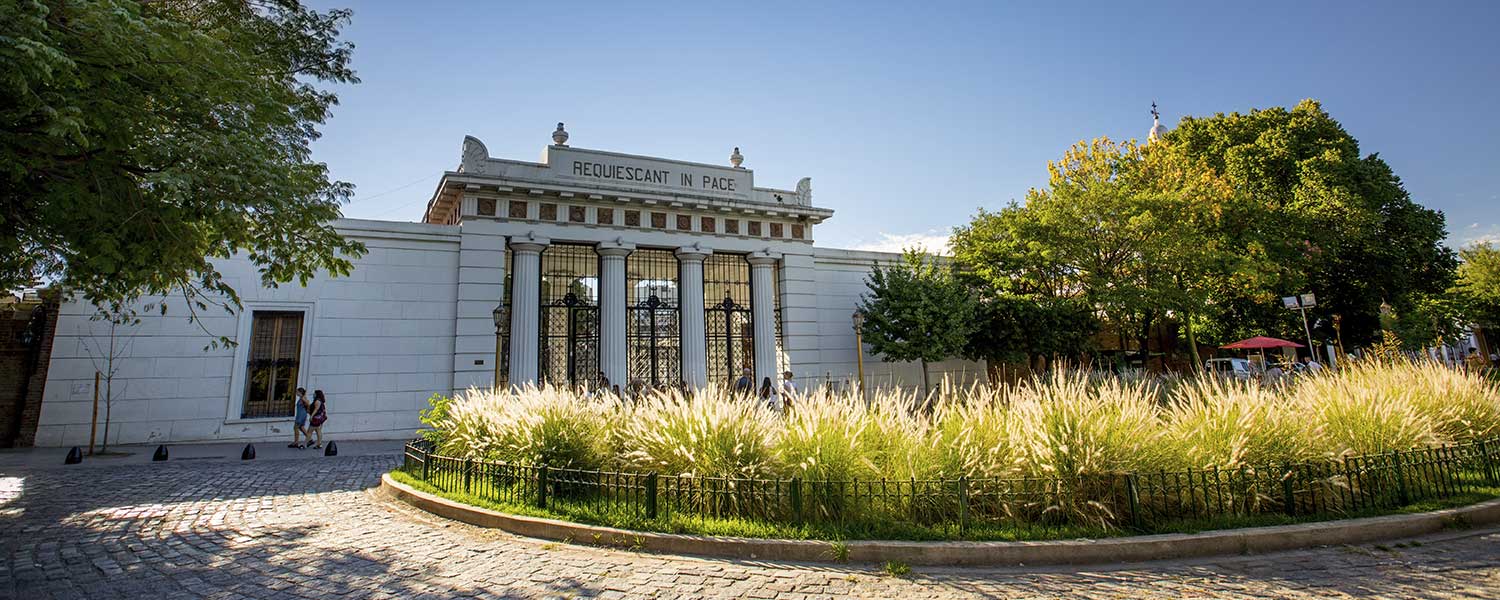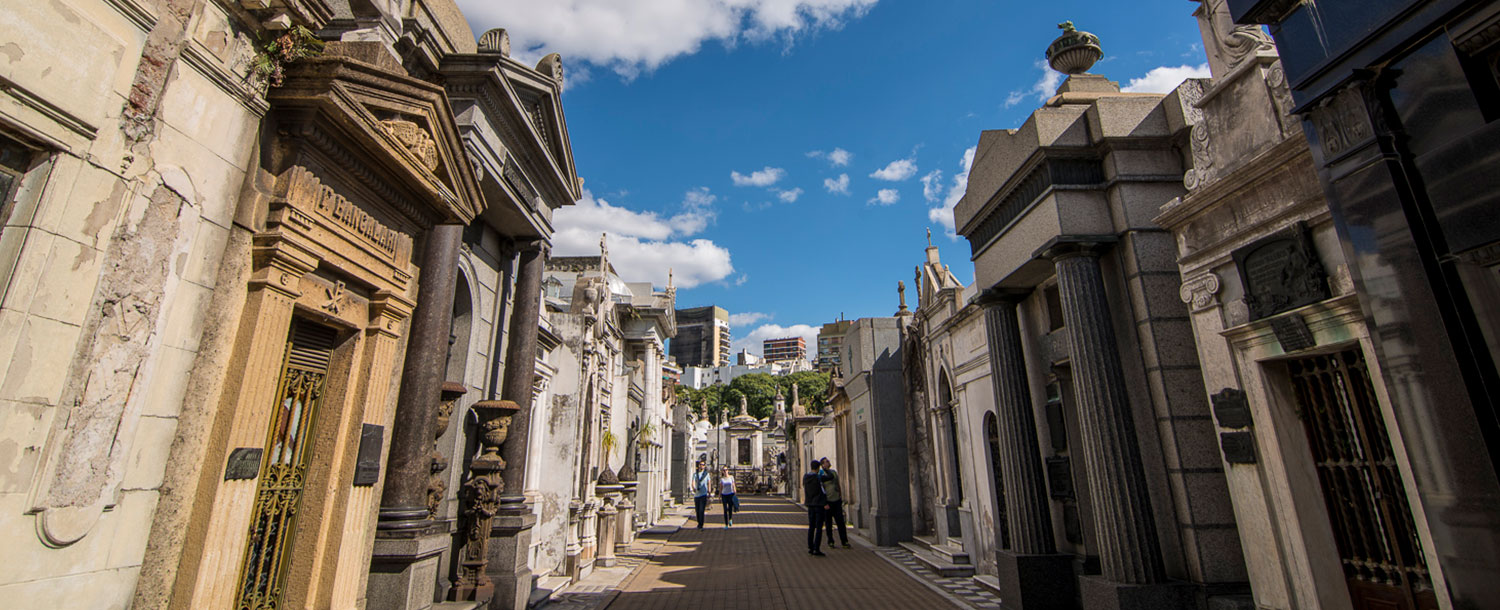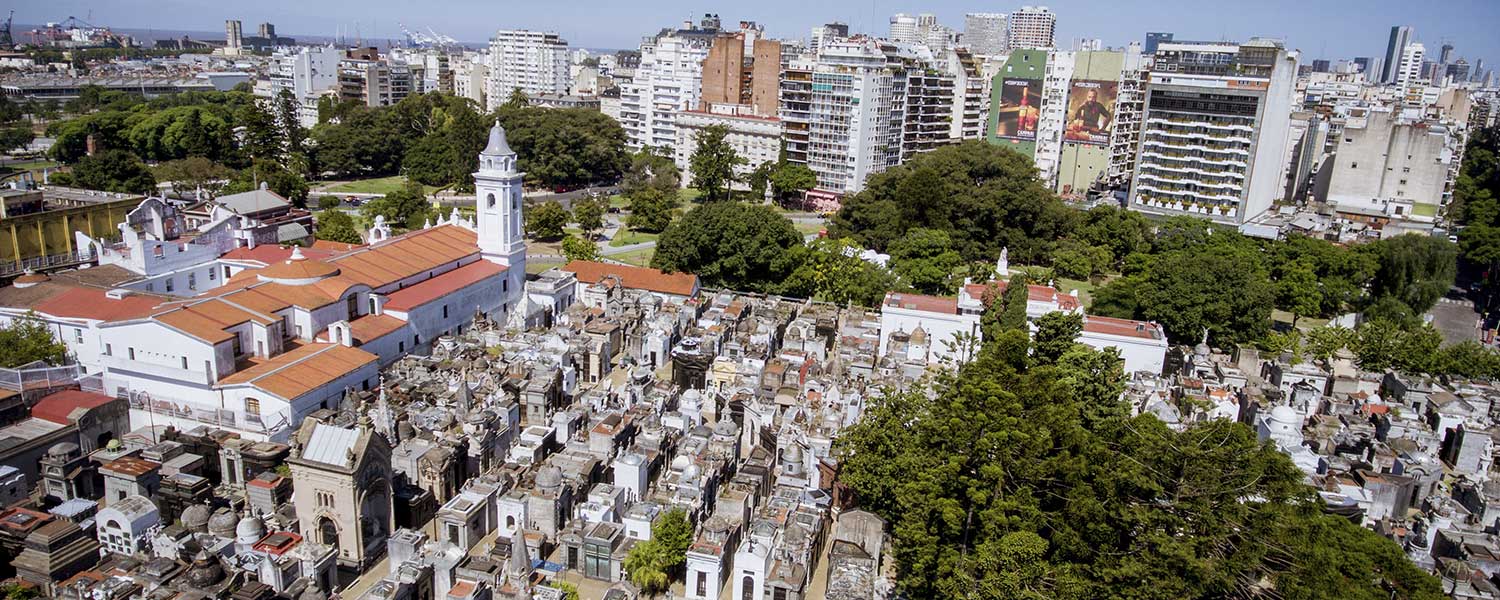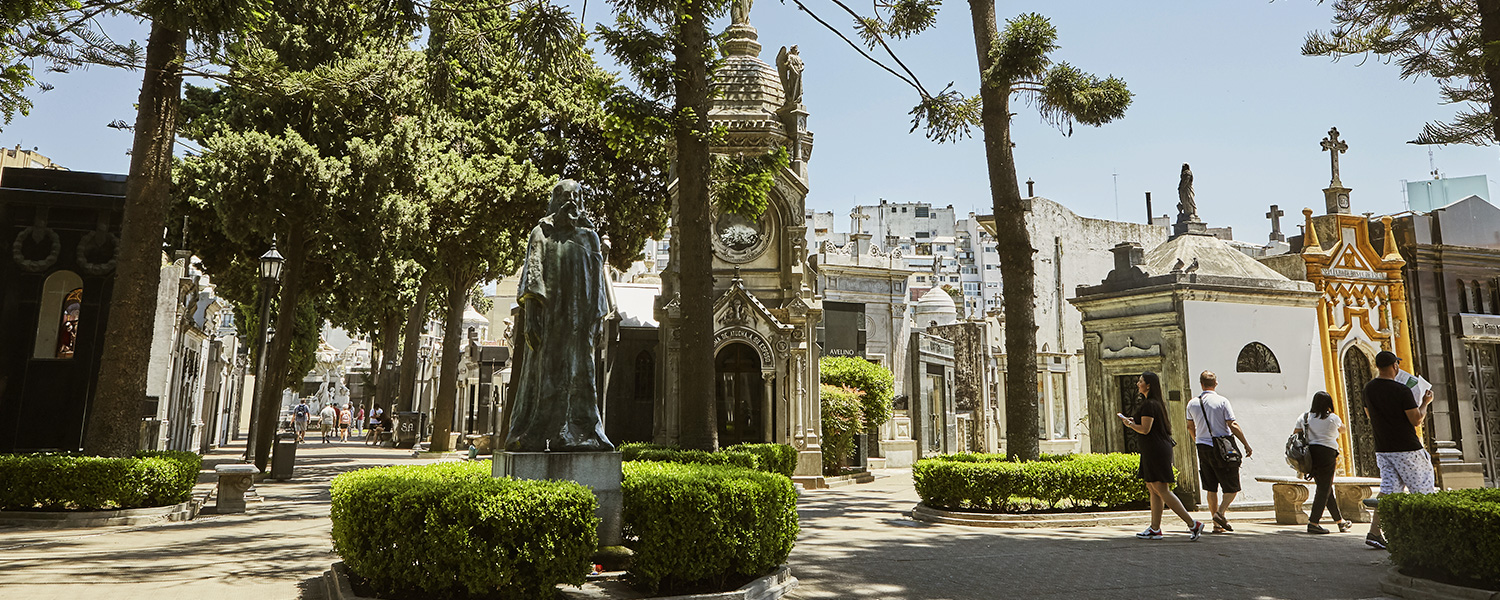Recoleta Cemetery
Present in tours
Over 6,400 statues, sarcophagi, coffins and crypts commemorate some of Argentina’s most celebrated sons and daughters, not least Eva "Evita" Perón, in this labyrinthine city of the dead.
Recoleta Cemetery, in the neighbourhood of the same name, was once the orchard of the adjoining Basílica Nuestra Señora del Pilar - the glistening white church that overlooks the square outside. The land, which belonged to the Recollect monks from which the neighbourhood took its name, became the city’s first public cemetery in 1822. Its layout was designed by French engineer Próspero Catelin, who also designed the city’s Metropolitan Cathedral in the Plaza de Mayo.
It is an eerily beautiful place, with shadowed walkways and towering marble mausoleums rich in Art Deco, Art Nouveau, baroque and neo-gothic architectural styles, Masonic symbols and powerful religious iconography. Over 90 of its tombs are listed as national historical monuments. The most visited tombs are those of Eva Perón and former Argentine presidents Sarmiento and Raúl Alfonsín.
The cemetery is open daily, 8am to 6pm. Free guided tours in Spanish take place at 11am and 2pm Tuesday to Friday, and at 11am and 3pm on Saturdays, Sundays and public holidays. The city tourist board also offers a guided tour of the cemetery and the wider Recoleta neighbourhood once a week.
Don’t forget to pick up a map at the entrance.
What to look out for
The mausoleum of the Paz family who owned the Palacio Paz (today the Circulo Militar) on Plaza San Martín as well as the newspaper La Prensa, is a majestic black stone structure, adorned with gigantic marble angles and Masonic imagery.
The beautiful art nouveau tomb of Rufina Cambaceres is another iconic tomb from the early 1900s. Built in Carrera marble by Rufina’s mother after it was discovered that Rufina had mistakenly been buried alive, the tomb's design bears all the hallmarks of her family’s terrible grief. Local workers had heard screams a few days after her burial, and when her coffin was disinterred, scratch marks were discovered on her face and on the insides of the coffin. It was later thought that she had been in a coma.
Every cemetery has a ghost story, and Recoleta is no exception. David Alleno worked for 30 years as a cemetery grave-digger, carefully saving his money for his own plot and a statue of himself. It is said that as soon as the architect he had commissioned for the statue had finished the work, Alleno went home and killed himself. Apparently you can still hear his keys jangling as his ghost walks the cemetery’s narrow pathways at dawn.
Also look out for the mausoleum of Liliana Crociati, who died on her honeymoon in Austria in the 1970s. Her parents reconstructed her bedroom within her tomb, and at the entrance placed a bronze statue of Liliana in her wedding dress, with her beloved pet dog at her side.
And finally, the tomb of Eva Peron (née Duarte). Although she died in 1952, her body wasn’t interred in the Duarte family mausoleum for 20 years. Evita lies in a heavily fortified crypt some five metres underground, to protect her remains.
See more about Recoleta neighbourhood.




